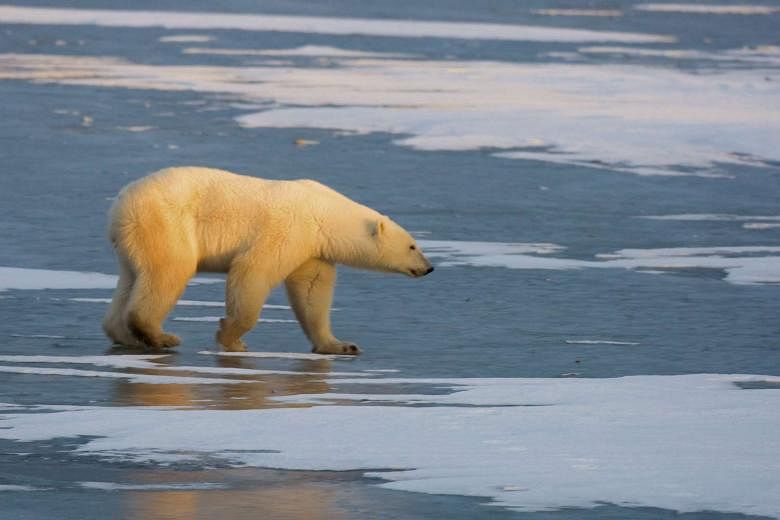PARIS (AFP) - Polar bears just can't catch a break.
Already struggling to cope with climate change, the giant Arctic carnivores also face a chemical poisoning risk 100 times above levels considered safe for adult bears, according to a study released Thursday (Jan 5).
For bear cubs feeding on contaminated milk, that risk is 1,000-fold greater, researchers reported in the journal Environmental Toxicology and Chemistry.
"This work is the first attempt to quantify the overall risk of persistent organic pollutants" - known as POPs - "for the Arctic ecosystem," said lead author Sara Villa, a toxicologist at the University of Milano Bicocca in Italy.
For the study, Villa and her team canvassed 40 years of research on the exposure of polar bears, seals and Arctic cod to these deadly compounds.
The data covered bears living between Alaska and the Svalbard Islands above Scandinavia - far less is known about the population in the Russian Arctic.
POPs are easily-spread chemicals that can persist in natural environments for decades, and become more concentrated as they move up the food chain.
By the time they travel, say, from plankton to fish to seals to polar bears, these compounds accumulate into highly toxic doses.
Used in industry and agriculture, some are also found in consumer products such as fabric flame retardants.
In the 1970s, a class of industrial chemicals called PCBs - found to cause cancer and wreak havoc with hormones - were widely banned, but concentrations in Arctic mammals remained high well into the 1990s.
There are traces still today.
But even as PCBs have declined, a new family of pollutants has taken their place, and today pose the greatest chemical threat to polar bears, the study found.
"Perfluorooctane sulfonate" - more commonly known as PFOS - "is considered very toxic for mammals," the study notes.
"Their concentrations in polar bears are surprisingly high," a hundred times more than in seals.
At the same time, when bears eat contaminated seals, the toxins increase in concentration 34-fold.
Unlike PCBs, these chemical compounds are still in production, and accumulate in protein - muscle - rather than fat.
They are used primarily in water and oil repellents for paper, packaging and fabrics, as well as in certain fire-fighting foams.
For a composite "hazard risk" of 19 different organic chemicals found in polar bear tissue, half the danger came from PFOS.
Bear cubs are especially at risk.
The Canadian government has independently concluded that this class of chemicals constitutes "a danger to the environment," and especially to wildlife.
Even without taking these new threats into account, recent surveys have concluded that the total polar bear population - estimated at about 26,000 - is on track to drop a third by mid-century.
The main threat is the rapid decline in sea ice, which the bears use as floating platforms to hunt seals that can outswim them in open water.
Global warming - which has pushed up Arctic temperatures twice as fast as the global average - could produce ice-free summers in the Arctic Ocean within a couple of decades, scientists say.
With this additional threat, "it is fundamental to continuously implement the control of new and emerging contaminants," Villa cautioned.

